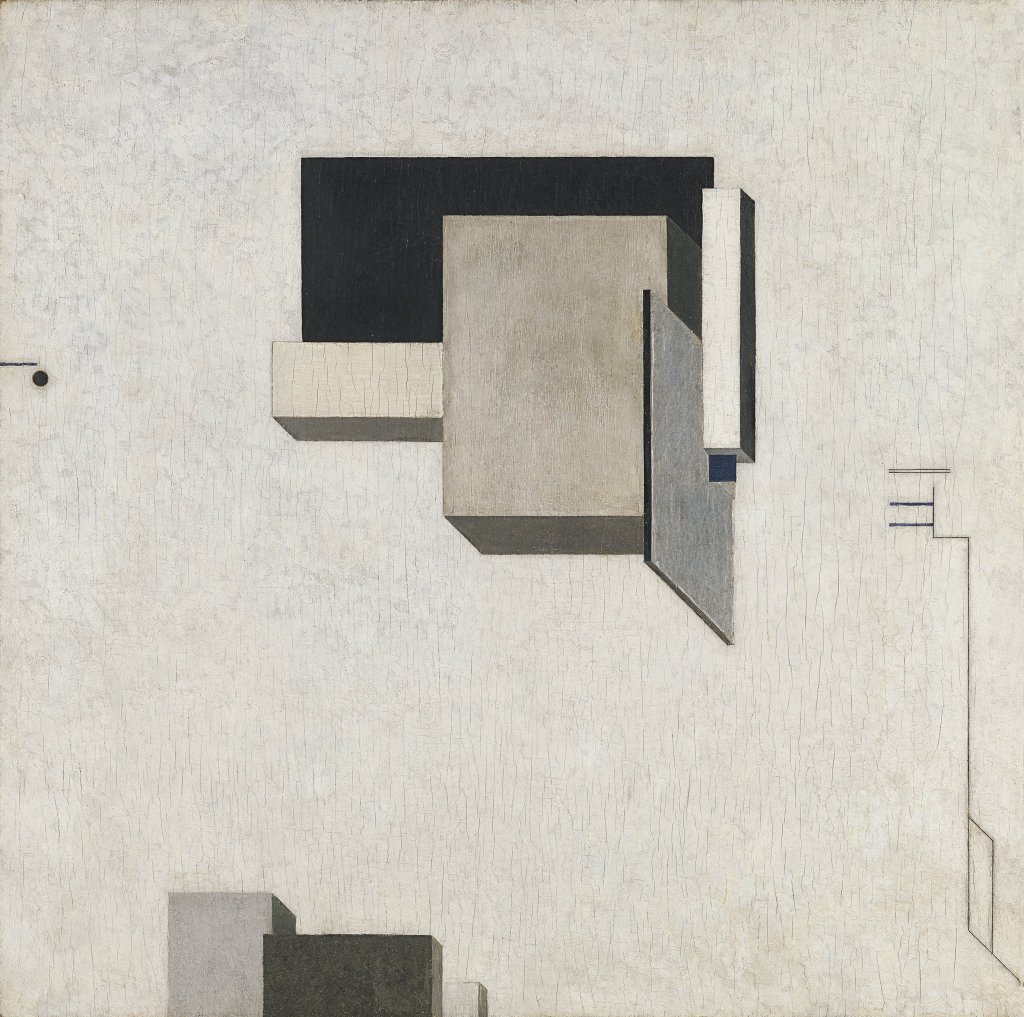
El Lissitzky, Proun 1 C, 1919, Oil on panel. 68 x 68 cm, Museo Nacional Thyssen-Bornemisza, Madrid
Mentioning Constructivism, the first name that pops up into my mind is none else than El Lissitzky and his series of “Proun”.
El Lissitzky was one of the artists who dedicated to the Great Experiment. He was considered among the most multifaceted and cosmopolitan of revolutionary Russia. Around 1919 he started investigating a series of pictures named “Proun” in which his wish was to integrate painting and architecture. The works show a markedly geometric character which later became his chief achievement.
The word “Proun”, which has no apparent meaning, is an acronym of the Russian words “PROyect Utverzhdenia Novogo” (Project for the Affirmation of the New), which he explained as “a stage on the path towards the construction of a new configuration (Gestaltung) which emerges from a ground fertilized by the corpses of pictures and their artists.”
They are geometrical compositions with powerful spatial and architectural effects in which all the traditional laws of perspective have been abolished. The shapes are drawn with a ruler and compasses, resulting in a very sober geometrical drawing, but each element of the composition is rendered from a different angle of vision, creating a highly dynamic spatial play dominated by asymmetry. The notions of balance and gravity are replaced by a new weightlessness without scale. As the artist himself explained in one of his theoretical texts, “Proun is no longer a picture and becomes a building that must be viewed (by moving around its outside) from all angles.” We are left, consequently, with works that initially deceive us into easily passing over them but soon reveal the presence of Lissitzky’s artistic sophistication and his awareness of developments in contemporary art in Russia and the West.
The Thyssen-Bornemisza Proun 1 C was one of the first compositions in the series of eleven lithographs a unique manifesto, colonphone, front, and back covers in gouache, ink, and pencil in 34.2 x 44.7 cm. In their commentary on the painting, John Bowlt and Nicoletta Misler include a photograph of El Lissitzky in his Vitebsk studio in 1919, in which the work can be seen hanging beside other Proun pictures, showing that it was painted in the small Jewish town where he worked from 1919 to 1921 at the People’s Art School, in close collaboration with Malevich. The numbers assigned to the various Proun pictures relate to the series established by the artist in his inventories, and the letters to possible owners. The word “unovis” written on the reverse of the painting refers to the group formed by Malevich.
citation:
Lissitzky, E. (1970) Proun 1 C, Museo Nacional Thyssen-Bornemisza.
Birnholz, A.C. (2023) El Lissitzky’s ‘Prouns’, part I, Artforum.